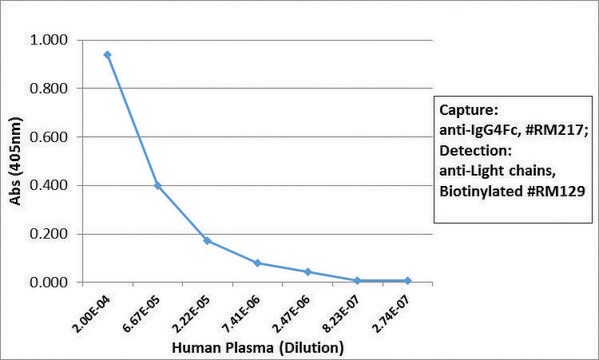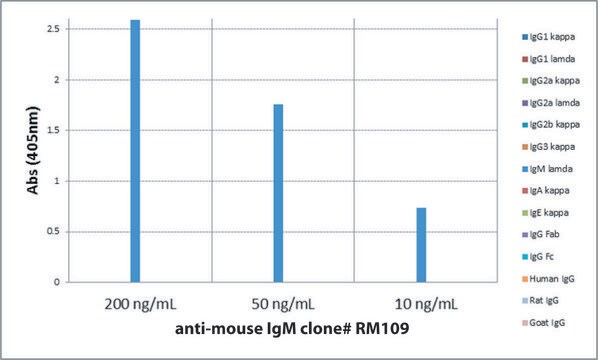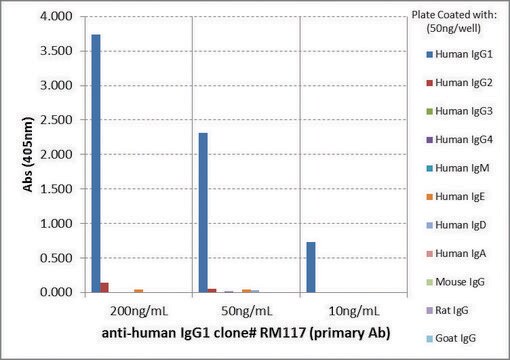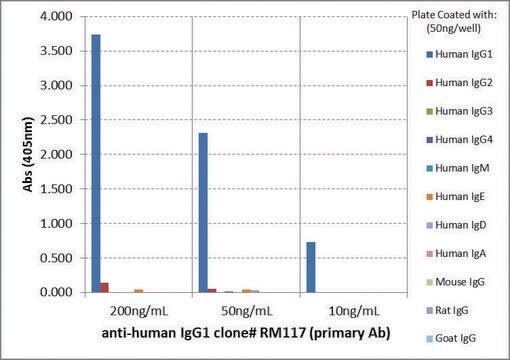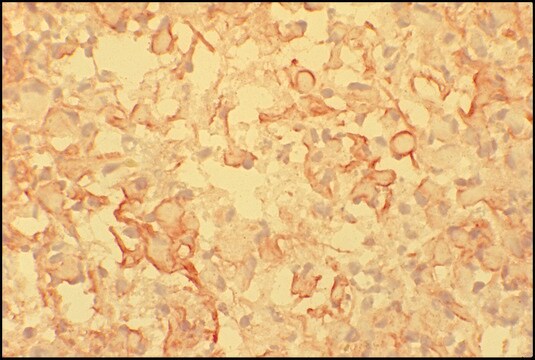SAB4200770
Anti-Human IgG4-Peroxidase antibody, Mouse monoclonal
clone HP-6025, purified from hybridoma cell culture
Synonym(s):
Anti-Human immunoglobulin G4
About This Item
Recommended Products
biological source
mouse
Quality Level
conjugate
peroxidase conjugate
antibody form
purified from hybridoma cell culture
antibody product type
primary antibodies
clone
HP-6025, monoclonal
form
lyophilized powder
species reactivity
human
concentration
~2 mg/mL
technique(s)
ELISA: 1:80,000-1:160,000 using 1 μg/mL human IgG4 for coating
isotype
IgG1
shipped in
dry ice
storage temp.
−20°C
target post-translational modification
unmodified
General description
Immunogen
Application
Physical form
Other Notes
Not finding the right product?
Try our Product Selector Tool.
Signal Word
Warning
Hazard Statements
Precautionary Statements
Hazard Classifications
Skin Sens. 1
Storage Class Code
12 - Non Combustible Liquids
WGK
WGK 2
Flash Point(F)
Not applicable
Flash Point(C)
Not applicable
Choose from one of the most recent versions:
Certificates of Analysis (COA)
Don't see the Right Version?
If you require a particular version, you can look up a specific certificate by the Lot or Batch number.
Already Own This Product?
Find documentation for the products that you have recently purchased in the Document Library.
Articles
Antibody-based serology tests are useful in identifying subjects with an adaptive immune response to the SARS-CoV-2 virus. Anti-human immunoglobulin antibodies allow for quick and simple, yet reliable assays with easy readouts and can also be adapted for high-throughput screening.
Global Trade Item Number
| SKU | GTIN |
|---|---|
| SAB4200770-1VL | 4061824080834 |
Our team of scientists has experience in all areas of research including Life Science, Material Science, Chemical Synthesis, Chromatography, Analytical and many others.
Contact Technical Service